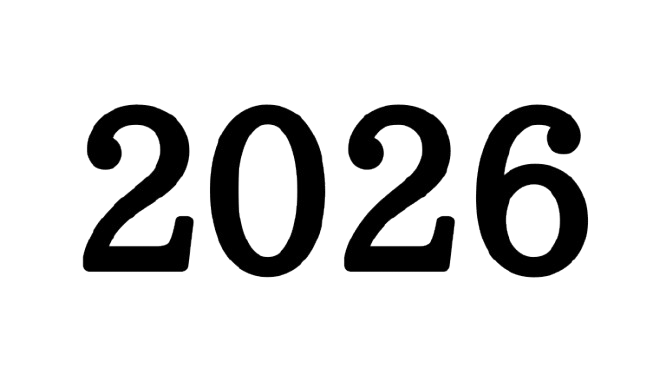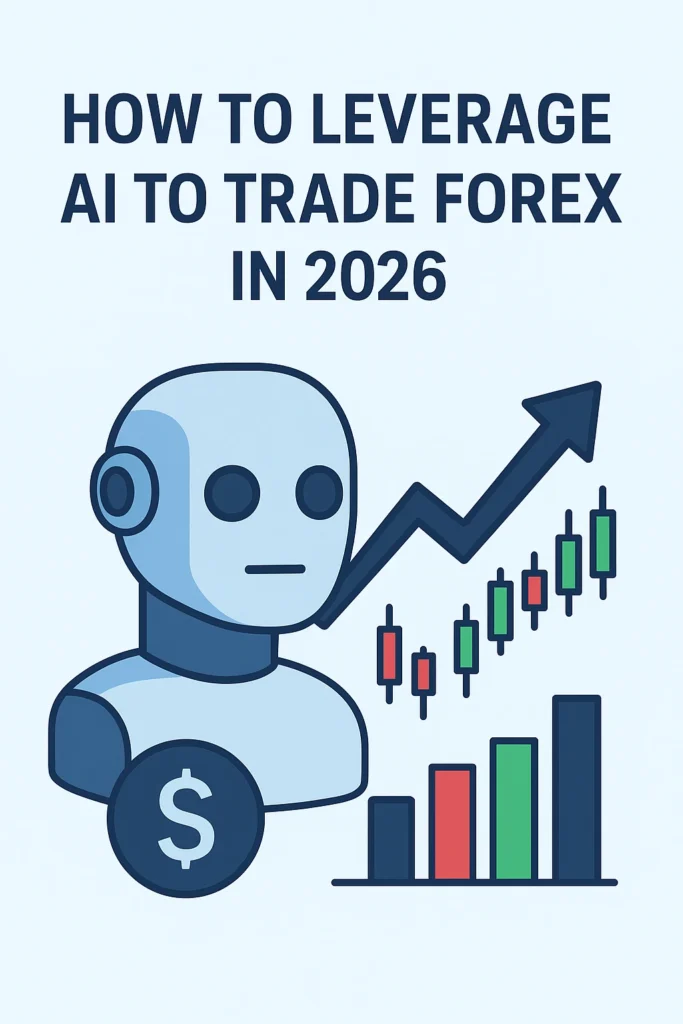Artificial Intelligence (AI) is reshaping nearly every corner of the global economy and the foreign exchange (forex) market is no exception. Once reserved for large institutions with deep research budgets, AI-driven tools are now available to individual traders who want to make faster, data-backed decisions. “How to Leverage AI to Trade Forex in 2026“
In 2026, forex trading has entered a new phase where algorithms can process millions of data points in real time, analyze market sentiment, and even adapt to changing conditions automatically. But AI is not magic; it’s a tool that rewards understanding, discipline, and strategy.
This guide explores how to responsibly use AI in forex trading in 2026 including tools, methods, risk management, and practical ways to integrate machine learning into your trading workflow.
The Rise of AI in Forex Trading
The forex market operates 24 hours a day across different time zones, creating massive data streams price movements, macroeconomic indicators, and global news. Human traders can’t keep up with that pace. AI, however, thrives on it.
Using machine learning (ML) and deep learning, AI systems can detect subtle price patterns, predict volatility, and automate execution. Major banks and funds already rely on these systems, and retail platforms are quickly catching up.
In 2025, Citi partnered with Ant International to test an AI-powered foreign exchange forecasting tool that reduced hedging costs for corporate clients. That pilot demonstrated what’s now possible at scale and it foreshadowed the retail tools coming to market in 2026.
How AI Actually Works in Forex
AI in forex trading can be broken into a few main approaches:
- Machine Learning Models
- These models learn from past price data and patterns. A trader can train a model to predict future exchange rates, flag overbought/oversold conditions, or identify profitable times of day.
- Deep Learning Networks (LSTM, CNN, RNN)
- Long Short-Term Memory (LSTM) networks are a type of deep learning model particularly effective for time-series data like currency prices. These models “remember” sequences, helping them forecast reactions to interest rate decisions or employment reports.
- Natural Language Processing (NLP)
- NLP tools analyze the tone of central bank statements, financial headlines, and even social media sentiment to gauge market mood before it’s reflected in prices.
- Reinforcement Learning (RL)
- In RL, an AI agent “learns” by making simulated trades and receiving feedback (profits or losses). Over thousands of iterations, it refines its strategies to maximize return and minimize risk.
- Automated Execution Systems
- Once a trading model generates signals, AI can automate entries, exits, and stop-loss management eliminating emotional errors and improving timing.
READ our Article on US Stock Market Holidays 2026 to keep trading wisely.
Why 2026 Is a Turning Point
Three major factors make 2026 a breakthrough year for AI-based forex trading:
- Computational Power: Cloud-based GPUs and specialized AI chips have drastically reduced the cost of training models.
- Access to Data: Economic and price data APIs are now easily available, often integrated directly into broker platforms.
- Smarter Platforms: AI is no longer hidden behind code. No-code and low-code trading interfaces allow anyone to test and deploy intelligent strategies safely.
Practical Tools to Explore in 2026
How to Leverage AI to Trade Forex in 2026
A number of AI-enabled trading platforms are worth noting this year. Each caters to different levels of expertise:
- MetaTrader 5 with AI Plug-ins: Traditional platform enhanced with AI-trained Expert Advisors (EAs) for custom strategies.
- Capitalise.ai: Allows traders to write strategies in plain English (“Buy EUR/USD if RSI crosses below 30 and USD strength index falls”).
- TrendSpider: Uses AI to automatically identify chart patterns and trendlines across multiple timeframes.
- Kavout (Kai Score): Generates predictive asset scores by blending fundamentals, sentiment, and technical indicators.
- Sentifi / AlphaSense: Tracks market sentiment, company news, and macro events using AI text analysis.
Each of these can help traders create or refine a strategy but none should replace human oversight. AI helps you decide; it should not decide for you.
Building a Smarter Forex Strategy with AI
To use AI effectively, follow a structured process:
Start with a Clear Objective
Decide what you want the AI to do. Predict price direction? Spot reversals? Manage risk? Narrow objectives make models more effective.
Collect and Clean Data
Feed your model reliable data from sources like central banks, financial APIs, or broker platforms. Filter out bad ticks or missing points.
Train and Test the Model
Split data into training and validation sets. Always backtest strategies across multiple market conditions (bullish, bearish, and sideways).
Simulate Before Going Live
Use a demo account or paper-trading environment to test your AI system under real-world speed and latency conditions.
Add Risk Controls
AI systems can react quickly which means mistakes can also multiply quickly. Use fixed drawdown limits, adaptive stop losses, and position-sizing rules.
Keep a Human in the Loop
AI excels at pattern recognition but struggles with context like sudden policy shifts or black-swan events. Monitor your system and intervene when logic breaks.
Example: Predictive Models in Action
Imagine an LSTM model trained on five years of EUR/USD data combined with interest-rate differentials and ECB press releases.
The model predicts short-term volatility spikes with 70% historical accuracy. You set it to alert you (not execute automatically) when volatility exceeds a threshold.
Now, instead of relying on gut instinct, you make data-driven decisions buying or hedging only when probability supports it.
That’s the core of intelligent trading in 2026: AI for insight, not impulse.
Common Mistakes to Avoid
- Overfitting: When a model performs perfectly on past data but fails in live markets.
- Neglecting Risk Management: AI can’t save you from oversized positions or lack of discipline.
- Poor Data Quality: Incomplete or biased data skews results.
- Ignoring Regulations: In some jurisdictions, fully autonomous trading may require specific licensing or disclosure.
- Believing Hype: Beware of “AI bots” that promise guaranteed profits. Real models come with uncertainty and learning curves.
Regulation and Transparency
As AI grows in trading, regulators are increasing scrutiny.
Both the U.S. Commodity Futures Trading Commission (CFTC) and the European Securities and Markets Authority (ESMA) emphasize transparency in algorithmic decision-making.
In 2026, traders using AI must ensure they can explain at least broadly how their systems make decisions. Recordkeeping, trade logs, and audit trails are essential.
For retail traders, this also means choosing brokers that explicitly support automated or AI-assisted trading to stay within compliance.
The Global Perspective
AI-based forex trading isn’t limited to the U.S. and Europe.
- Asia: Singapore and Hong Kong are nurturing fintech ecosystems where AI forex startups receive major funding.
- Australia: ASIC has issued new guidelines clarifying how automated systems must manage risk, opening doors for regulated AI trading services.
- India: Algorithmic trading adoption is rising as brokers offer machine-learning-based indicators for retail investors.
- UK: London remains a center for quantitative FX research, with universities and funds collaborating on AI forecasting.
This global expansion means innovation is accelerating but also that regulatory expectations are spreading quickly.
Future Trends to Watch
Explainable AI (XAI)
Traders and regulators want transparency. XAI helps models show why they made certain predictions.
Sentiment-Driven Trading
AI models that read central bank speeches, press conferences, and even Reddit discussions will grow in popularity.
Federated Learning
Data-privacy laws are leading to models that learn from decentralized data without transferring raw information improving accuracy while keeping compliance.
Real-Time Risk Dashboards
AI risk tools will soon alert traders to anomalies in their own systems not just the markets.
The Human Edge
The best traders in 2026 combine the precision of AI with human intuition.
AI processes the “what”; humans interpret the “why.”
A successful forex trader uses AI to find edges small probabilities but still decides when and how to act. The technology amplifies good judgment; it cannot replace it.
Final Thoughts
AI has democratized access to professional-level trading insights. In 2026, traders can analyze vast data sets, forecast volatility, and automate execution all without a coding background.
But like any tool, its effectiveness depends on the user.
AI-powered forex trading requires discipline, oversight, and realistic expectations. Treat it as an assistant, not a shortcut.
Used correctly, it can improve accuracy, consistency, and speed giving you the same analytical power that once belonged only to major institutions.

